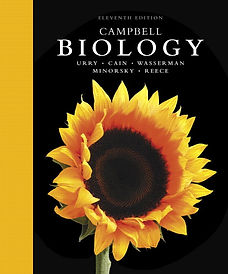WeeseLab
Biogeography, Evolution and Conservation
Georgia College & State University
Overall, the aim of this course is for students to develop a fundamental understanding of the physical, chemical, and biological principles common to all organisms and to gain a fundamental comprehension of the concepts of modern biology. This course introduces students to the organization of living systems, the classification of living things, the continuity of life, energy transfer, biodiversity, cellular biology, basic genetic principles and evolution. The topics include: the science of biology; the classification of living organisms; an introduction to eukaryotes, prokaryotes, Protista, and Fungi; general biochemistry; the structure and functions of cells and cellular organelles; cellular respiration; photosynthesis; DNA structure and function; cell division; protein synthesis; heredity; and evolution.
The investigation of the diverse life forms. Emphasis will be placed upon their systematic groupings as well as their morphology, physiology, life histories and ecology. In particular, by the end of the course the student should:
-
Recognize the species as the fundamental unit of classification and identify the hierarchy reflected in evolutionary relationships
-
Be able to explain the history of major biological thought regarding evolution and the changing of species
-
Be able to explain the processes whereby species evolve over time
-
Be able to classify organisms into kingdoms and know the defining characteristics, natural histories, and behaviors of these kingdoms, phyla, and major classes
-
Be able to define biological populations, communities and ecosystems and understand the forces affecting them

Overall, the aim of this course is to introduce students to the fundamental principles of genetics, including: patterns of inheritance, Mendelian genetics, mitosis and meiosis, DNA structure and function, transcription and translation, gene expression and population genetics. Upon completion of this course students should be able to demonstrate a fundamental understanding of basic genetic principles. Specifically, students should be able to:
-
Connect the to its functions and the mechanisms by which it fulfills them.
-
Describe the molecular process of gene expression from DNA to protein.
-
Describe the significance of meiosis and mitosis and how they are regulated by the cell cycle.
-
Explain how Mendel’s crosses relate to the process of meiosis and effects patterns of inheritance.
-
Predict the results of crosses using probability rules.
-
Use numerical and phenotypic evidence to develop and support hypotheses about underlying mechanisms of inheritance.
-
Use the Hardy-Weinberg equilibrium as a null model, and understand its value in describing the evolution of populations.

Promotes independent thinking through critical analysis of primary literature. Through this course you will gain experience reading scientific papers from the primary literature, developing scientific writing skills and improving your oral presentation skills. Ideally, the skills you will develop during this course will carry over to future academic and employment pursuits.
This course approaches evolutionary biology as a process, illustrating the interplay between theory, observation, testing and interpretation. The student will be expected to examine and evaluate biological phenomena in light of the evolutionary processes that shaped them.
The field of Molecular Ecology encompasses various sub-disciplines within the biological sciences. At its heart, molecular ecology employs molecular variation in nucleic acid and/or protein data to answer question involving populations and communities of organisms. Given this breadth, the principles learned in molecular ecology are directly applicable to both prokaryotes and eukaryotes, and can be utilized to address question in nearly any research area.
Population genetics examines the interaction of basic evolutionary processes (including mutation, natural selection, genetic drift, inbreeding, and gene flow) in determining the genetic composition and evolutionary trajectories of natural populations. Upon completion of this course students should be able to demonstrate a fundamental understanding of basic population genetic principles.
Marine Biologyof the Bahamas

Summer 2023
.
This course will focus on the scientific study of life and living things in and around San Salvador Island. This island offers a unique setting in which to study the variation and complexity for marine organisms and their communities. In this course students will experience the diversity of coral reefs, marine fish and marine invertebrates, participate in field studies in marine biology, and explore the mangrove forests and coastal marine habitats of San Salvador Island. These hands-on field trips will help students develop a better understanding of the mechanics of marine ecosystems and how human impact has altered these fragile environments. Along the way, students will also learn about the island's complicated history and rich culture. During the day, approximately six hours will be spent over two sessions in the field conducting hands-on research and surveys, snorkeling and exploring coastal habitats. These daily field trips will be discussed during the nightly lectures.

Marine Biology
BIOL/ENSC 3500
Scientific study of life and living things in and around the ocean. The marine world provides a rich source of subject matter for biologists. We will begin our survey with an overview of marine science, review the physical environment and biology, then concentrate on groups of organisms, their adaptations, and the ecology of marine communities.
Maymester 2017
This month long course is a combination lecture and intensive field course designed to introduce students to the biology and ecology of Georgia’s coast. The class spends one week on Georgia's Sapelo Island.